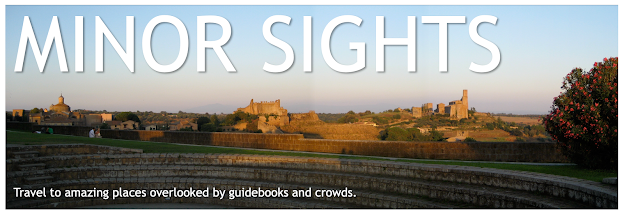 |
| Photo © The Bulldog Trust |
What?
A late Victorian mansion built for the businessman and politician, William
Waldorf Astor (yup, the hotel owner.)
Why visit?
Two Temple Place is one of London’s hidden architectural gems.
Two Temple Place is one of London’s hidden architectural gems.
As one of the world’s wealthiest men Astor ensured that no
expense was spared in the mansion’s construction and that it reflected his life
and personal interests.
The result is a building every bit as eccentric as it
is opulent. And it’s only been open to the public since 2011.
Where?
Two Temple Place (WC2R 3BD) stands on a quiet side street on Victoria Embankment not far from the bustling Strand. Map.
Two Temple Place (WC2R 3BD) stands on a quiet side street on Victoria Embankment not far from the bustling Strand. Map.
BORN INTO A
prominent American family, William Waldorf Astor (1848–1919) was an only child.
After being privately tutored in Europe he returned home to New York to
practise law then turned his hand to politics. His wealthy background and his
failure to enter Congress, however, made him a target for the press. As a
result he spent the early 1880s in Rome, where he developed a lifelong interest
in art.
Following
his return to New York, Astor inherited his father’s vast fortune and in 1890
built the Waldorf Hotel (his cousin John Jacob Astor IV built the adjoining
Astoria Hotel in 1897). Around the same time a family feud prompted him to
relocate his family to England, where in 1892 he purchased the Pall Mall Gazette and the Cliveden
estate in Buckinghamshire. It was to manage these new business ventures that he
commissioned Two Temple Place.
Completed in
1895 to a design by the Gothic Revival architect John Loughborough Pearson
(1817–1897), the exterior of Two Temple Place is rendered entirely in Portland
stone. High above the machicolated parapet is a copper weather vane
representing the caravel in which Columbus sailed to America. It symbolises the
path taken in 1784 by Astor’s German ancestor, John Jacob Astor – and Astor’s
own journey in the opposite direction.
The bronze lamp standards flanking the
main entrance demonstrate Astor’s modernity by incorporating cherubs using a
telephone and an electric light!
 |
| 'Hello?' |
 |
| Photo © The Bulldog Trust |
Crossing the
threshold an imposing vestibule gives onto the richly-decorated Staircase Hall.
Panelled in oak it features a Pavonazetto marble fireplace and a floor inlaid
with chalcedony, jasper, porphyry and onyx. That Astor was a fan of historical
fiction is clear from the mahogany staircase, the newel posts of which support characters
from his favourite novel The Three
Musketeers. On the first floor is a gallery with ten columns of ebony
topped off with more sculptures. Inspired this time by American literature they
feature characters from The Last of the
Mohicans and Rip Van Winkle.
Above these runs a frieze depicting 82 characters from the plays of
Shakespeare, the whole being lit by a glorious stained-glass cupola.
 |
| Photo © The Bulldog Trust |
 |
| Photo © The Bulldog Trust |
Entered through a door decorated with
heroines from Arthurian legend, it features stained-glass windows at either end
representing Swiss landscapes at sunrise and sunset. Overhead is a hammer-beam
roof made of Spanish mahogany. The cedar-lined walls are surmounted by a frieze
in which a further 54 characters from history have been carved in relief and
then gilded, with a dozen freestanding figures above. How curious it is to see
Bismarck and Martin Luther mingling with Robin Hood and Maid Marion!
 |
| Photo © The Bulldog Trust |
 |
| Photo © The Bulldog Trust |
Known originally as the Astor Estate Office, Two Temple
Place is now owned by the Bulldog Trust, a philanthropic organisation providing
support and advice to various charities. It also offers educational facilities
in tandem with its unique annual exhibitions of publicly art from collections outside London. Staged between January and April these provide an
ideal opportunity to visit this unique building.
Getting there:
Circle or District Tube line to Temple. Two Temple Place is open during exhibitions between January and April and at other times by appointment only www.twotempleplace.org.
About the author:
Duncan J. D. Smith is a self-styled urban explorer, travel writer, historian and photographer. Born in Sheffield in the north of England he is currently based in Vienna, Austria.
Duncan is the sole author and publisher of the ‘Only In’ Guides, a series of guidebooks revealing European cities from unusual perspectives. Published volumes include Berlin, Budapest, Cologne, Hamburg, Munich, Paris, Prague, Vienna, and Zurich. The article above is extracted from Duncan’s latest book “Only in London”.
For more information visit www.onlyinguides.com and www.duncanjdsmith.com.




good
ReplyDelete